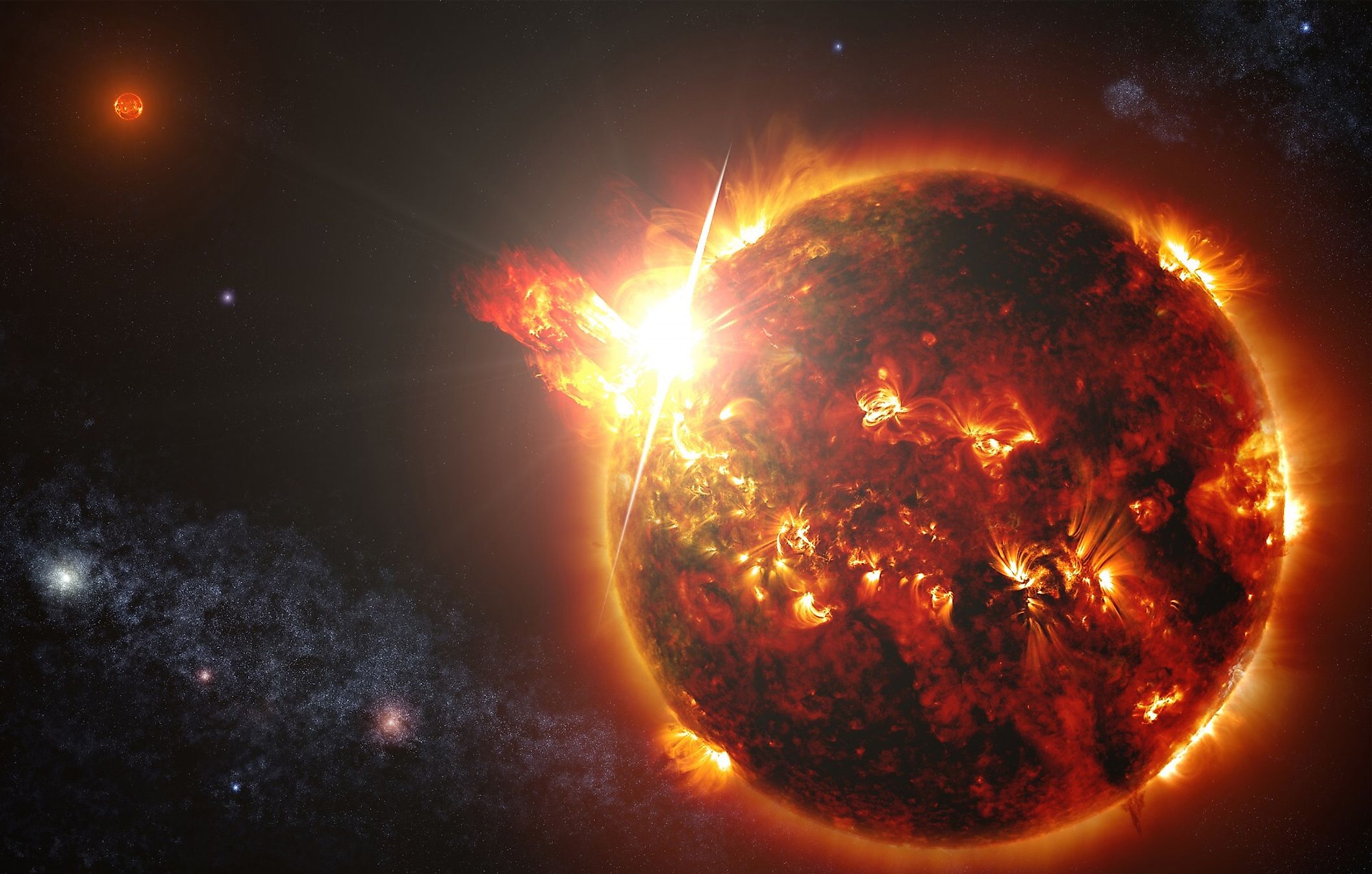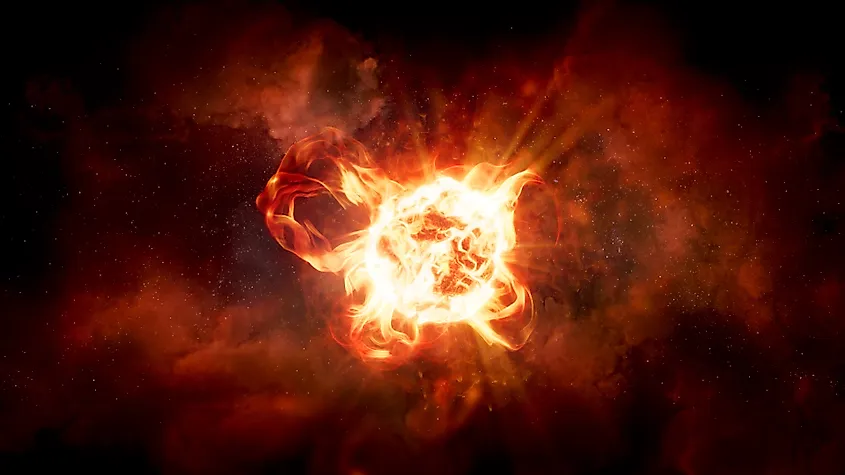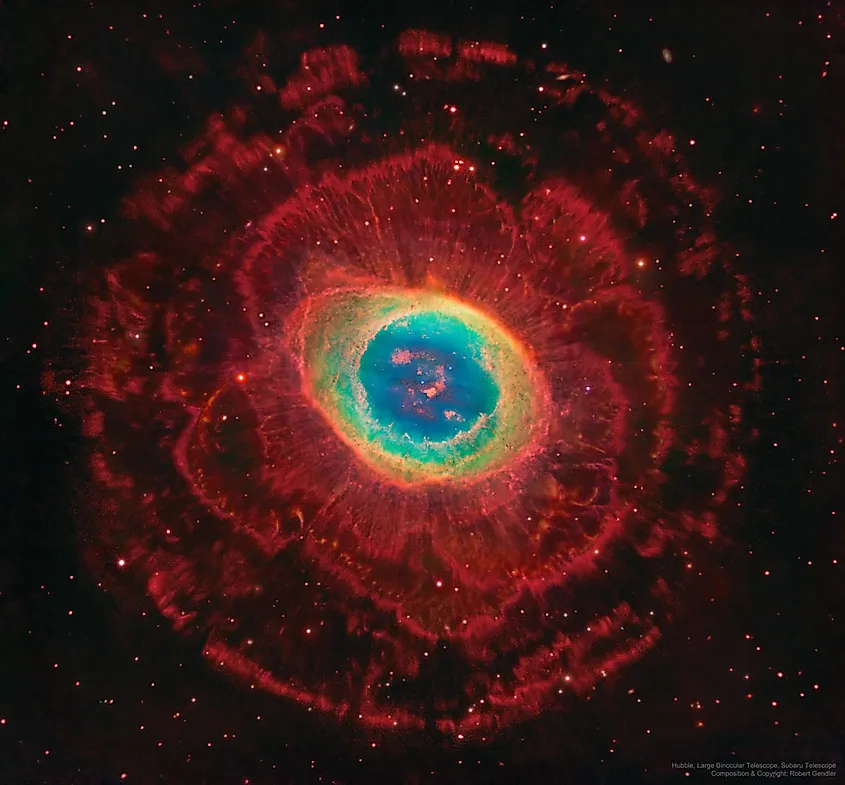
What Are Red Giants?
Red giants are a type of star that are in the final stages of their lifecycle. Interestingly, every star will become a red giant at one point in their life, with their final fate determined by the mass of the star.
Formation

Every star that is powered by the nuclear fusion of hydrogen in their core is known as a main sequence star. Despite stars containing vast amounts of hydrogen, it is only a finite amount, and eventually it runs out. The fusion of hydrogen within a star’s core produces helium, which builds up in the star’s core like ash in a fireplace. Once a star begins running out of hydrogen, the amount of nuclear energy flowing outwards begins to decrease, and the immense gravity of the star begins causing it to collapse inwards. The star may contract by as much as 98%, and the extreme compression causes hydrogen outside the core to fuse into helium. Thus the region of hydrogen fusion migrates away from the core, which causes the core of the star to become hotter and denser. Under these more extreme conditions, the star’s core is now able to fuse helium into heavier elements, releasing a tremendous amount of energy that counteracts the star’s gravity and causes the star to expand outwards. The star may expand hundreds of times larger than its original size, and this increase in size also causes the outer layers of the star to cool. As a star swells, temperatures become distributed over a larger surface area, and so the surface of the star becomes colder and the star turns red. The star has now been transformed into a red giant.
Eventual Fate

How a red giant evolves will be largely dependent upon its mass. For low to medium mass stars, such as our sun, the process of nuclear fusion will generally stop with helium. Since the red giant has grown to such an immense size, the star’s gravity is no longer strong enough to hold the star together. Over time, the outward flow of energy from the core blows of the outer layers of the star, forming what’s called a planetary nebula. For more massive stars, however, the fusion of helium causes further buildup of heavier elements such as carbon and oxygen. When these stars run out of helium, they go through the same contraction process again, which in turn allows the star to fuse even heavier elements. Some stars may go through this contraction and expansion phase multiple times, yet it eventually comes to an end when the star creates iron in its core. Iron is the first element that requires more energy to fuse than it releases, and so once iron begins building in a star’s core, its fate is sealed. Iron absorbs the star’s energy, and gravity inevitably takes over and causes the star to collapse inwards, eventually resulting in the entire star exploding as a mighty supernova.











